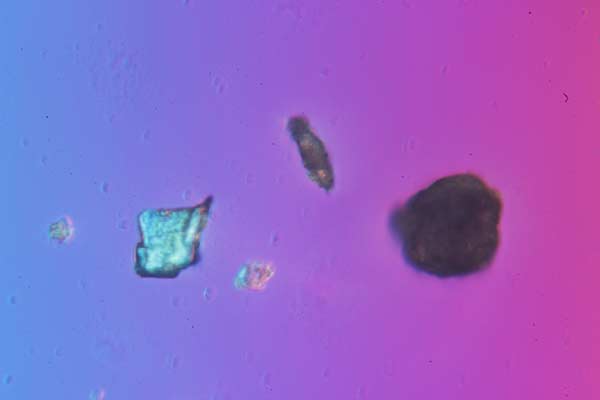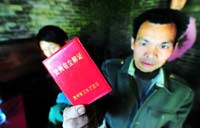Scientist focuses on smog and micro-world
 |
|
A picture of smog particles under the microscope taken by Zhang Chao [Photo provided to China Daily] |
Although he graduated as a science major from Beijing Normal University, Zhang says it is difficult for him to give an exact definition of what smog is in Beijing. "It's too complicated, and its ingredients keep changing."
Under his scope, which magnifies the sample 1,000 times, the smog is found to contain minerals, fragments of animal fur and insects, seeds and burnt dust. But many are compounds, he says, which are more difficult to identify.
"I wanted to know if there are many pollen grains in the early spring's smog, and my guess turns out to be right," Zhang says, noting there are on average 10 pollen grains found on each slide.
"Though the number is low compared with other ingredients of smog, it may partially explain why smog makes us feel uncomfortable because many people are allergic to pollen."
Zhang realizes that he may have disappointed the public because he can't show the inner construction of PM2.5, today's most notorious element in smog. It is beyond the capacity of his microscope and camera to explore such tiny grains.
Working as a freelancer and editor for an astronomy magazine affiliated with the National Astronomical Observatories of the Chinese Academy of Sciences, his regular job is to stare at the starry firmament and write popular-science articles. However, he is proud to have stirred equal interest by observing the micro world.
"You cannot imagine how splendid the micro world is until you fall in love picturing bugs in the garden, different kinds of sand grains, or some tiny corners in our daily lives.
"My favorite is to shoot snowflakes. I would love to compile my snowflake pictures to publish a book. But you know how much warmer Beijing was in the past winter - I should have traveled to northeastern China to get more pictures."


















